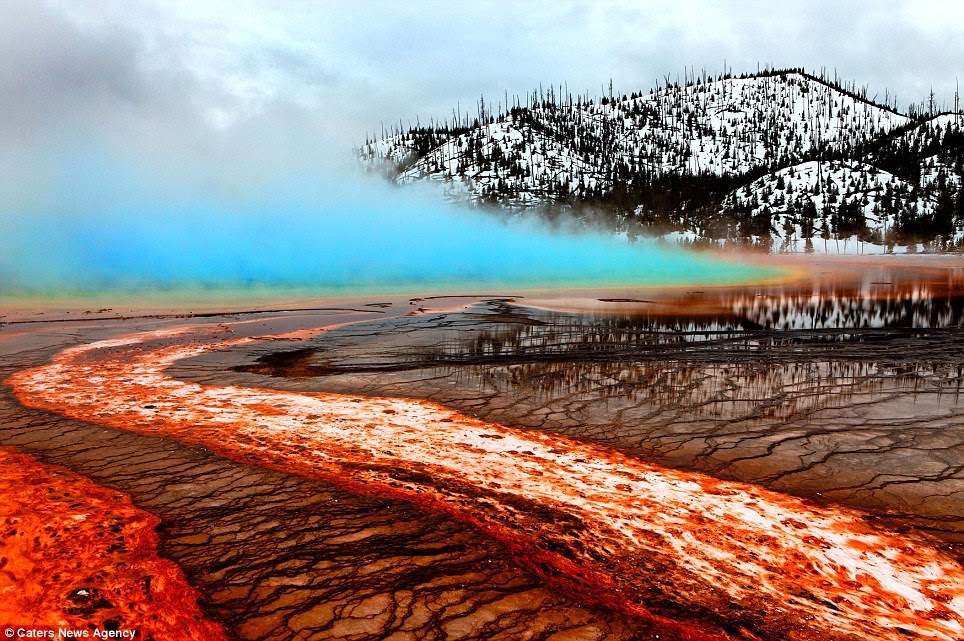On April 15, 2014 the peoples around the
world saw first total lunar eclipse. Which in resulting “blood Moon” was a
quite thriller? Actually during the eclipse the moon's hue ranges from bright
orange to blood red, and many thanks to sunlight that seeps through the Earth's
atmosphere onto the moon's face. So the first of four “blood moon” eclipses
lived up to expectations, proving an eerie sight across North and South America
when the moon was illuminated a deep red. The four-stage wonderful event,
recognized as a “Tetrad”, is also believed to mark the beginning of significant
events and even the “end of the world” in some religions.
It is projected the next Tetrad cycle
won't happen until 2032. The breathtaking sight occurs when the Earth's shadow
passes over the moon and it will happen three more times over the next two
years as part of this cycle. However; lunar eclipses occur multiple times in a
year during a full moon, this eclipse is an exclusive lucky viewing opportunity
for North America. The whole continent won't be able to witness a full lunar
eclipse in its entirety again until 2019.
A lunar eclipse happens when the moon
passes in the shadow of Earth. This is an area recognized as the umbra, where
light from the sun is blocked by our planet. The light diverts inversely in the
atmosphere and, as it hits the moon, it appears red. This gives upsurge to its
“blood red” appearance during a whole eclipse, when the entire moon is in
shadow. If it skirts the shadow, famous as a partial or penumbral eclipse, the
effect is less dramatic.
This gives the misconception that the
moon is changing phases in a matter of minutes instead of weeks. When the
eclipse's is on peak, the moon enters the Earth's full shadow; the umbra. Now
at this stage the Earth's atmosphere scatters the sun's red visible light; the similar
process that turns the sky red at sunset. As a result, the red light reflects
off the moon's surface, casting a reddish rust hue over it. It's not frequently
to see our planet's shadow, but a lunar eclipse gives us a fleeting glimpse.
During these rare events, the full moon rapidly darkens and then glows red.
At the eclipse's peak the moon entered
the Earth's full shadow, the umbra. At this stage, the Earth's atmosphere
scattered the sun's red visible light - the same process that turns the sky red
at sunset. As a result, the red light reflected off the moon's surface, casting
a reddish rust hue over it. 'It's a projection of all the Earth's sunsets and
sunrises onto the moon,' it’s a very subtle effect, and if any part of the moon
is illuminated in the sun, you can't really see it.
It’s not happen all the time, because
the sky has to be clear and really gives you a best chance to look at the
phases of moon changing. Otherwise you can miss the chance if clouds over it.
However, some have faith in the eclipse has larger consequence. But this is not
something that certain religious think tank has put together.
Moreover NASA has confirmed “Tetrad” has
only happened 3 times in more than 500 years and that it's going to happen now.
NASA has also confirmed the Tetrad started on Tuesday night and will end on
September 28, 2015. The history tells us in 1493, the first Tetrad saw the
expulsion and the 2nd happened in 1949, right after the State of Israel was
created and the most recent one in 1967 happened during the Six-Day War between
Arabs and Israelis. The final one happens on September 28, 2015, which is also
during the Feast of the Tabernacles.




































